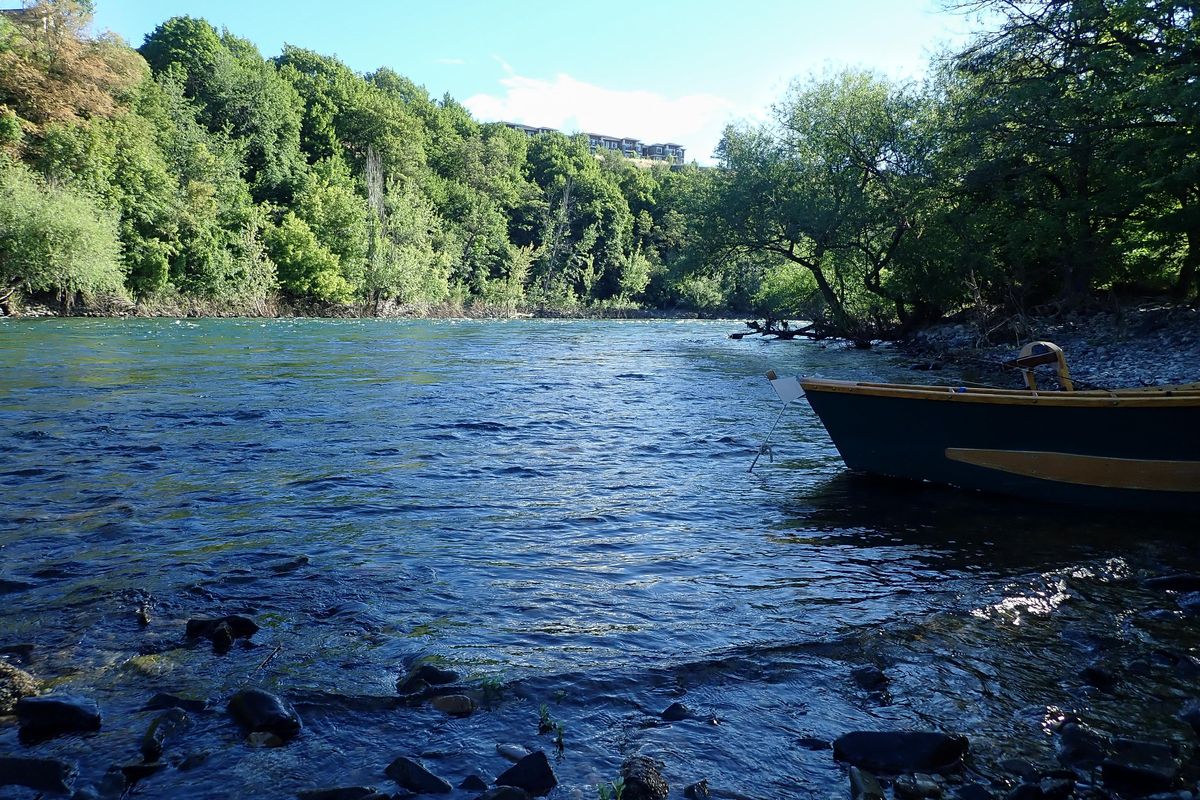Minutes from everywhere, the Spokane River offers a range of adventures

On this particular stretch of the river, it’s not hard to imagine oneself in a remote wilderness. One far from cars, people or any of the other various demands present during the average day.
The water is rushing over exposed river rock, laughing as it makes its way downstream. The steep banks of the Spokane River Gorge, covered in pine trees and long grasses, protectively hug the river.
“I came around here one time and I saw two huge mule deer buck,” said Jerry White Jr., Spokane Riverkeeper. “I had to pinch myself.”
The reason for White’s disbelief is underscored just minutes later when a jet roars overhead on its way to landing at Spokane International Airport.
The truth is, this stretch of river is just minutes from downtown Spokane. Directly above the steep banks is Kendall Yards and West Central, two of Spokane’s fastest-growing neighborhoods.
Within minutes of exiting the boat at the T.J. Meenach Bridge, we’re on busy roads bouncing our way back downtown.
For decades, the Spokane River was seen first for its economic value, an affordance used and abused by industry and the city alike. It was not a recreational venue. You would not voluntarily enter the Spokane River. The waters were full of heavy metals. Raw sewage befouled the waters Native American’s sometimes called the “place of fast water.”
Some stretches smelled so bad houses were built well back from the bank to avoid the reek.
“It was our septic tank,” said Andy Dunau, the Spokane River Forum executive director. “That’s where we flushed. Because of its industrial legacy, people just accepted that they didn’t have river access.”
Spokane “literally turned its back” on the river, he said. Buildings near the river faced away. Prime real estate locations, like Kendall Yards, remained undeveloped for decades.
But that’s all changed. With increasing environmental regulation and awareness about the state of the river some started to wonder: Why not turn back toward the river? Why not recognize it as the remarkable resource it is?
“The change has been dramatic,” Dunau said.
Dunau and others have spearheaded that change, creating the Spokane River Water Trail. The trail highlights different recreational access points along the river extending as far downstream as Fort Spokane. Each year, Dunau said. the water trail’s website gets between 13,000 and 15,000 unique visitors.
Those online numbers reflect real-life interest. Outfitters and others who work regularly around the river have seen a sharp increase in river use.
“Everyone agrees that people getting out on the river and enjoying it has gone straight north,” Dunau said.
Those efforts have been closely aligned with the city and Spokane Parks and Recreation. The city has spent millions reducing the amount of raw sewage that enters the river. At the same time, projects such as the river loop trail are making headway. A planned boat launch at Glover Field – in Peaceful Valley – is moving forward.
“You see more people using it, and it’s just so close to town and people are really understanding that the river is close to Spokane and easily accessible,” said Ryan Griffith, the city’s assistant outdoor recreation director.
While the river is not a park, it runs through several. And Spokane Parks and Recreation runs kayaking and rafting trips on the flat-water sections of the river.
The city contracts with river guide companies such as Row Adventures, Flow Adventures and Wiley Waters for more challenging whitewater trips.
On a recent Thursday, a group of Wiley guests hailed from across the country, including Hawaii and San Diego.
“It was the most awesome experience I’ve ever had outdoors,” said Wendy Turner from Hawaii.
At the same time, anglers are rediscovering the Spokane River. Fishing for redband trout has increased, White said. Silver Bow Fly Shop in Spokane Valley runs guided trips.
“It’s just recently rediscovered in the last decade or so,” White said of the trout fishing opportunities.
But with all that increased interest and use comes certain hazards.
Trout fishing, for instance. White estimates there are 300 redband per mile on the Spokane River. That’s not a lot when compared to other trout fisheries. But in the past when there were fewer anglers there were plenty of fish to go around.
Not necessarily anymore. With increased use comes increased pressure.
“That means, now, each fish is getting caught one or two times a season,” he said.
Catch-and-release fishing doesn’t hurt fish when done correctly. But the more times a fish is caught, the more times it’s exposed to possible mishandling.
And while the river may be cleaner than it’s been in a long time, there are still serious problems, White said.
While floating the river with White, it was clear when we passed the Latah Creek confluence. The emerald water turned frothy and brown. Agricultural runoff and erosion has long fouled the 60-mile-long tributary.
Another, ancillary concern for White is how more people will impact the aquifer. Currently fresh, cool aquifer water flows into the Spokane River year-round. That ground-cooled water is key to keeping the redband trout happy and healthy, even late into the summer months.
However, White worries that more use from an increasing population could drain the aquifer to a point where it wouldn’t be able to refresh the river.
Still, White and others are mostly optimistic about the increased exposure and attention given to the river. That increase can prompt people to conserve and care for the water resource in their midst.
White points to the Spokane Indians’ recent marketing and rebranding campaign focused on redband trout.
“They’ve really brought attention to the redband trout,” White said. “That’s an example of where use has been a good thing for the fishery.”
Dunau agrees that increased use can lead to increased care.
“I’ve always called the gorge area the holy grail,” he said.